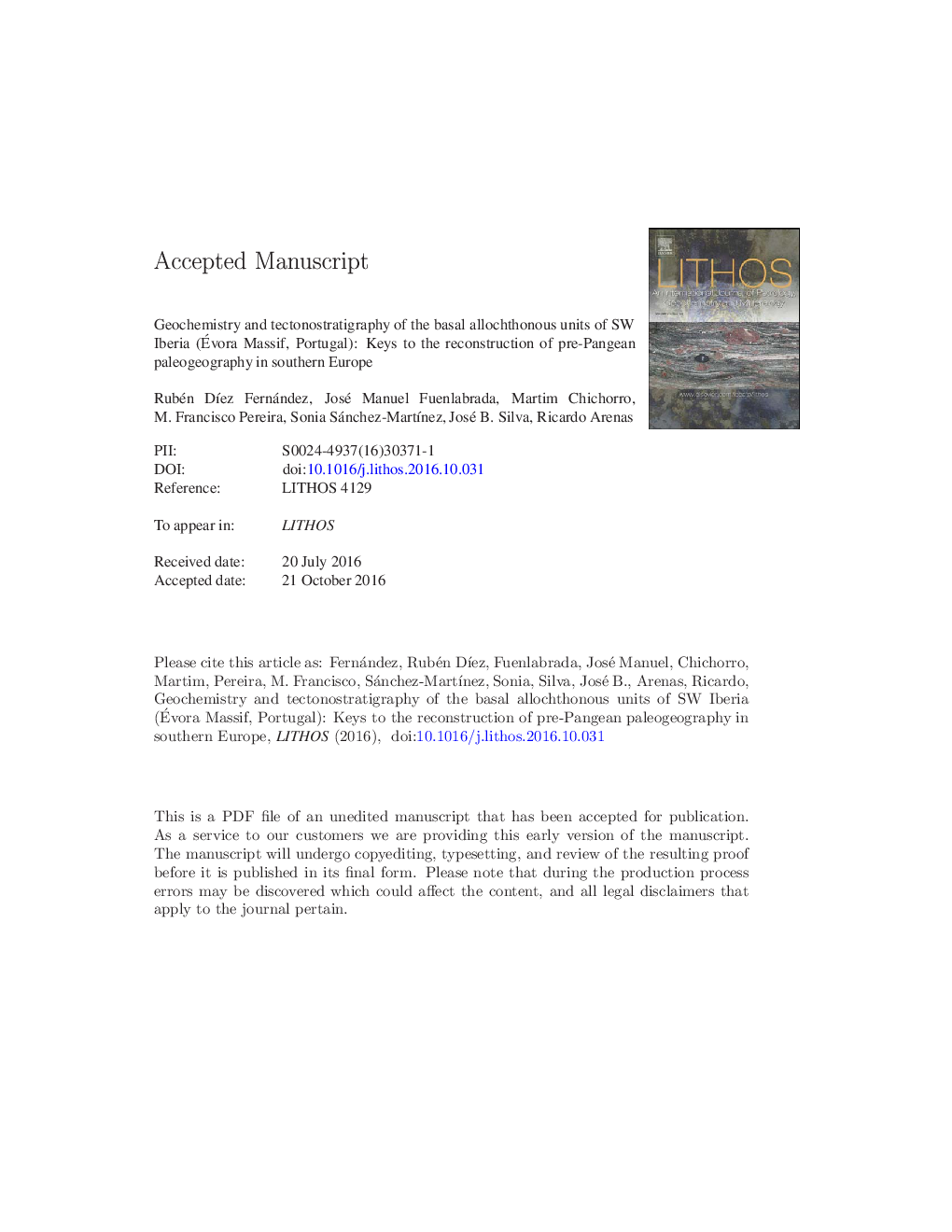| کد مقاله | کد نشریه | سال انتشار | مقاله انگلیسی | نسخه تمام متن |
|---|---|---|---|---|
| 5784349 | 1638637 | 2017 | 69 صفحه PDF | دانلود رایگان |
عنوان انگلیسی مقاله ISI
Geochemistry and tectonostratigraphy of the basal allochthonous units of SW Iberia (Ãvora Massif, Portugal): Keys to the reconstruction of pre-Pangean paleogeography in southern Europe
دانلود مقاله + سفارش ترجمه
دانلود مقاله ISI انگلیسی
رایگان برای ایرانیان
کلمات کلیدی
موضوعات مرتبط
مهندسی و علوم پایه
علوم زمین و سیارات
ژئوشیمی و پترولوژی
پیش نمایش صفحه اول مقاله

چکیده انگلیسی
The basal allochthonous units of NW and SW Iberia are members of an intra-Gondwana suture zone that spreads across the Iberian Massif and was formed during the collision of Gondwana and Laurussia in the late Paleozoic. This suture zone is made of allochthonous terranes and is currently preserved as a tectonically dismembered ensemble. A multi-proxy analysis is applied to the basal allochthonous units of Iberia to test their affinity and potential usage for tracing a suture zone. A comparison of the lithostratigraphy, tectonometamorphic evolution, geochronology, and geochemical characteristics of the Ediacaran series of these units reveals striking affinities. They derive from rather similar immature sedimentary successions, deposited along the same continental margin, and in relation to a Cadomian magmatic arc. Sm-Nd systematics indicates that the isotopic sources are among the oldest of the Iberian Massif (ca. 2.15-1.5Â Ga), suggesting a very strong contribution from the West African Craton. These Ediacaran series were affected by high-P and low- to medium-T metamorphism (blueschist to eclogite facies) during the Late Devonian (ca. 370Â Ma). They occur below allochthonous ophiolitic sequences, and on top of autochthonous or parautochthonous domains lacking of high-P and low- to medium-T Devonian metamorphism, i.e., tectonically sandwiched between lithosphere-scale thrusts. The combination of all these characteristics makes these particular Ediacaran series different from the rest of the terranes of the Iberian Massif. Such singularity could be useful for tracing more occurrences of the same suture zone along the Variscan orogen, particularly in cases where its preservation and recognition may be cryptic. It also contributes to improve the paleogeographic reconstruction of the margin of Gondwana during the Ediacaran.
ناشر
Database: Elsevier - ScienceDirect (ساینس دایرکت)
Journal: Lithos - Volumes 268â271, January 2017, Pages 285-301
Journal: Lithos - Volumes 268â271, January 2017, Pages 285-301
نویسندگان
Rubén DÃez Fernández, José Manuel Fuenlabrada, Martim Chichorro, M. Francisco Pereira, Sonia Sánchez-MartÃnez, José B. Silva, Ricardo Arenas,